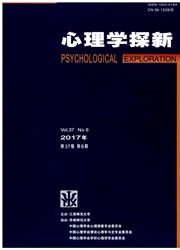

 中文摘要:
中文摘要:
Brown和Bigler提出了儿童歧视知觉模型,分析了歧视知觉的三个影响因素:认知因素、情景因素和个体差异因素,每个因素都包含了多个影响儿童歧视知觉的子因素。该模型展示了这些因素影响儿童歧视知觉的机制。完善该模型需要探讨其与信息加工理论、发展群际理论、主观群体动力学模型的兼容性。歧视知觉的类型需要进一步细化,因此在综合主观群体动力学模型和发展模型的基础上提出了歧视知觉的分类方案。未来研究还要进一步探讨情绪、文化以及年龄因素对儿童歧视知觉的影响,并探讨该模型对歧视干预的意义。
 英文摘要:
英文摘要:
The model on children' s perception of discrimination proposed by Brown and Bigler analyzes three factors which influence children' s perception of discrimination: the cognitive factor, the situational factor and the individual difference factor. Every factor in-eludes several sub - factors which affect children' s ability to perceive discrimination. The model displays the way by which the three factors affect children' s perception of discrimination. The improvement of this model necessitates considering the compatibility of this model with other theories such as social information processing theory, developmental intergroup theory and subjective group dynamics model. And in order to identify the concrete types of children' s perception of discrimination, a scheme for classifying children' s percep- tion of discrimination was proposed by integrating the model discussed and the subjective group dynamics model(SGD). Researchers in the future also should examine the roles of emotion,cultural differences and children' s ages in this model and explore the significance of this model for discrimination prevention.
 同期刊论文项目
同期刊论文项目
 同项目期刊论文
同项目期刊论文
 期刊信息
期刊信息
